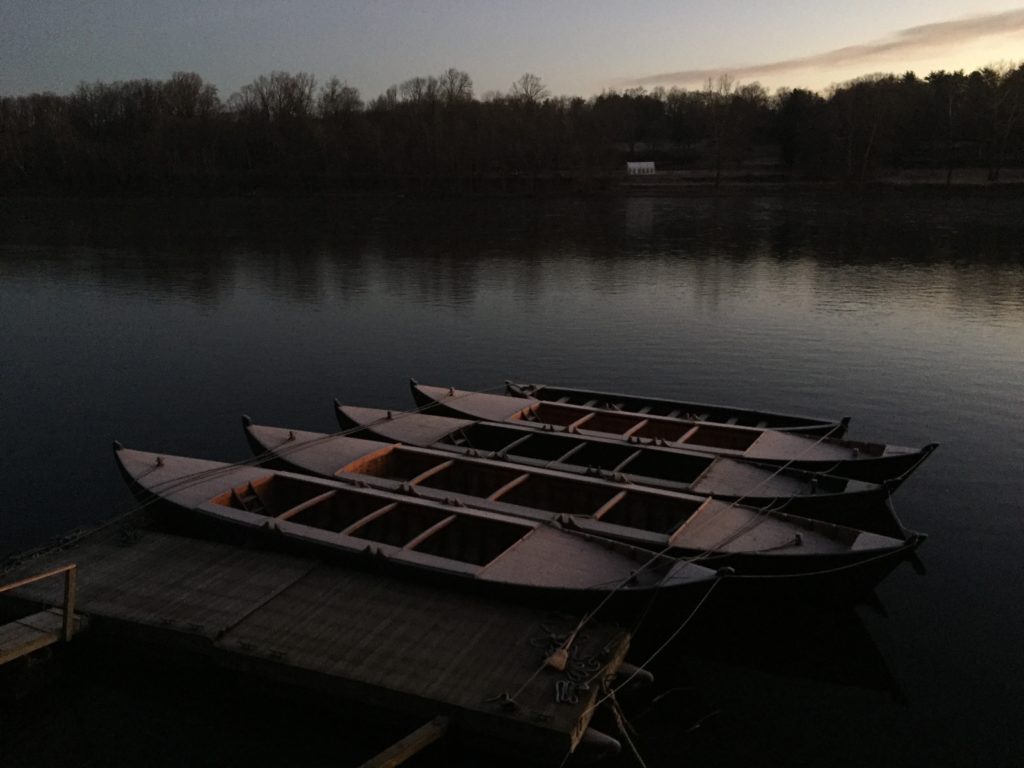
Photo by Larry Kaltenbach
The return trip across the Delaware River following the Battle of Trenton on December 26, 1776 proved to be even more challenging for General Washington and the Continental Army than their initial crossing only 24 hours earlier.
Three soldiers fell in along the way and died, according to Patrick K. O’Donnell’s account in his book, Washington’s Immortals.
And John Haslet, first colonel of the first Delaware Regiment, was nearly the fourth casualty. In a letter written on January 1, 1777 to his friend and mentor, Caesar Rodney, Haslet said he’d fallen in “up to my middle” and that his legs had been swollen ever since.
“He still managed to march some 12 miles on foot with the rest of Washington’s army during their overnight advance on January 3 from Trenton to Princeton,” where he was killed fighting in the Battle of Princeton, says David Price, a historical interpreter at Washington Crossing Historic Park.
By contrast, there’s no record of any American soldiers falling into the river during the Christmas crossing, although Price says that doesn’t necessarily mean it didn’t happen.
The Christmas crossing unfolded entirely between McConkey’s Ferry and Johnson’s Ferry (now Titusville, New Jersey) over the course of about nine hours. By contrast, a fragmented Continental Army returned to Pennsylvania from four different points: two Trenton ferries, Johnson’s Ferry, and Howell’s Ferry, located about midway between.
It was likely done that way to expedite the process, especially since the troops had about 900 Hessian prisoners in tow, Price says. But while the snowstorm that plagued the troops during the Christmas-night crossing had subsided, the bitter cold was unrelenting, and the river remained ice-choked.
That would have complicated matters, particularly for the flat-bottom ferry boats, which were likely the only vessels available from the New Jersey side (although the Continental Army may have sent previously-collected boats to New Jersey). The Durham boats that were used on Christmas night were docked at Johnson’s Ferry.
Aside from being difficult to maneuver in such conditions, soldiers who were unaccustomed to the ferry boats were off-balance, Price says. Of little help was the fact that many were either exhausted or drunk. According to David Hackett Fischer, the Americans discovered 40 barrels of the Hessians’ rum after the battle and drank much of it before Washington ordered the remainder destroyed.
“It’s not such a remarkable thing that a few soldiers died as a result of falling into the river. What is remarkable is that more didn’t die, given their state and the difficult conditions,” Price says. “There’s no way to quantify this, but untold numbers of soldiers survived those crossings, the march to Trenton and back, and the battle. But later, they succumbed to illness or exposure as a result of what they endured during those desperate hours.”
Note: To the best of our knowledge, no modern-day reenactors have fallen into the river during crossing reenactments.

